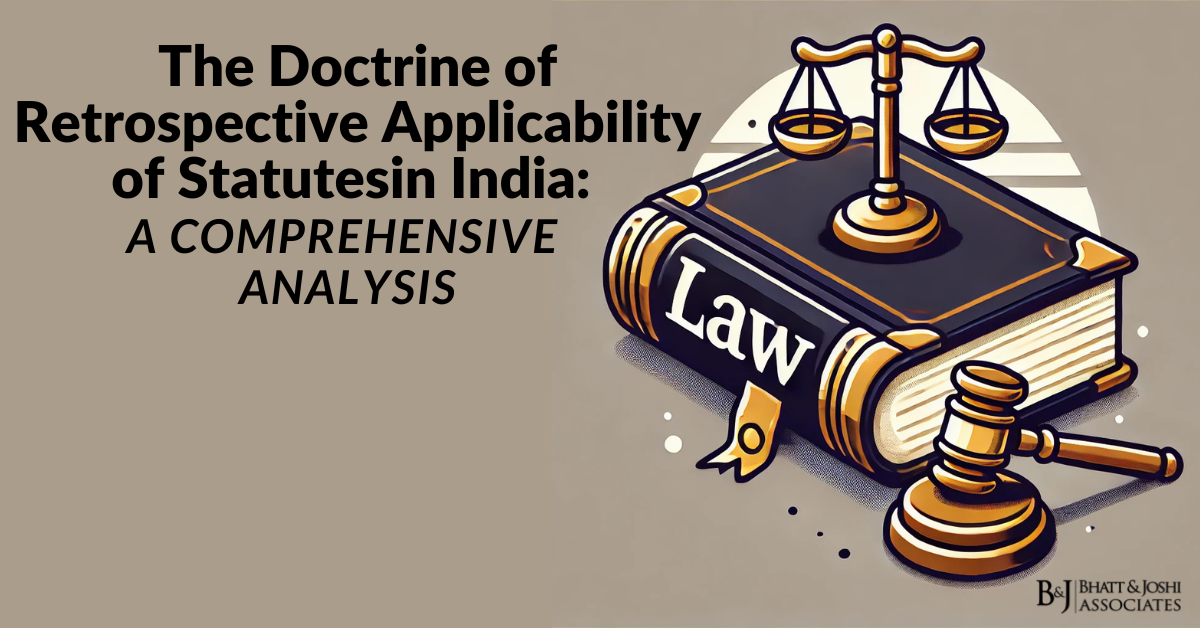Introduction
Ayurveda and traditional medicine have long been integral to India’s rich cultural and medical heritage. This system, rooted in holistic healing, emphasizes the balance between mind, body, and spirit. Traditional medicine systems, including Ayurveda, Siddha, Unani, and others, have evolved over millennia and continue to hold relevance in the modern era, both in India and globally. As public interest in alternative and complementary medicine grows, understanding the legal framework that governs these systems becomes increasingly crucial. With the establishment of the Ministry of AYUSH and the development of regulatory laws, Ayurveda has achieved legal recognition in India. However, it also faces various regulatory challenges in quality control, commercialization, and global integration.
Historical Context of Ayurveda and Traditional Medicine
Ayurveda’s roots trace back over 3000 years to ancient Indian texts such as the Charaka Samhita and Sushruta Samhita, which outlined complex theories of healing based on natural elements, diet, lifestyle, and medicinal plants. Traditionally, medicine in India was closely aligned with religious and spiritual practices, forming an essential part of the Vedic way of life. As colonial influence introduced allopathic medicine, Ayurveda and other traditional systems faced marginalization. However, post-independence India saw a revival of interest in these systems as the government sought to reinstate indigenous knowledge alongside modern healthcare practices.
Efforts to institutionalize traditional medicine gained momentum during the mid-20th century, leading to the enactment of laws aimed at preserving and regulating Ayurveda, Siddha, Unani, and other systems. As globalization expanded Ayurveda’s reach, the legal status of traditional medicine became more nuanced, focusing on regulation, research, education, and international cooperation.
Legal Framework Governing Ayurveda and Traditional Medicine
India has developed an extensive legal framework that governs the practice, education, and commercialization of Ayurveda and other traditional medicine systems. The government established the Ministry of AYUSH in 2014 to formalize and regulate these practices. This was a crucial step in ensuring that Ayurveda, along with other traditional systems, would have legal backing, regulated practice, and enhanced public health benefits. The ministry oversees various laws and regulatory bodies, which ensure adherence to quality and safety standards.
The Indian Medicine Central Council Act, 1970
A milestone in Ayurveda’s legal journey, this Act established the Central Council of Indian Medicine (CCIM). The CCIM is responsible for regulating educational standards and ensuring the professional competence of Ayurvedic, Unani, and Siddha practitioners. The Act also formalized the registration of practitioners, ensuring that only those with appropriate qualifications can practice Ayurveda. This was a crucial step in curbing the rise of unlicensed and potentially harmful practitioners while promoting Ayurveda as a credible and scientifically supported system of medicine.
The Drugs and Cosmetics Act, 1940 (AYUSH Amendments)
As Ayurveda gained popularity in the post-independence era, concerns over the safety and efficacy of Ayurvedic drugs emerged. The Drugs and Cosmetics Act of 1940, amended to include Ayurvedic and Unani medicines, provides comprehensive regulations for the manufacture, sale, and distribution of Ayurvedic drugs. The act defines “Ayurvedic drugs” and outlines strict guidelines that ensure that medicines adhere to prescribed quality standards. The goal of these amendments was to maintain the integrity of Ayurvedic medicine while protecting consumers from substandard or adulterated products.
The National AYUSH Mission (2014)
Recognizing the growing demand for alternative medicine, the National AYUSH Mission was launched to strengthen and promote Ayurveda and traditional medicine systems. This mission emphasized improving healthcare services and infrastructure, fostering educational institutions, and promoting research. One of the mission’s key elements was the development of quality control standards to ensure that Ayurvedic treatments were safe, effective, and accessible.
The National Commission for Indian System of Medicine (NCISM) Act, 2020
Replacing the Indian Medicine Central Council Act, 1970, this Act established the National Commission for Indian System of Medicine (NCISM) to further elevate the standards of education and practice in Ayurveda, Unani, and Siddha. The NCISM is tasked with advancing research in traditional medicine, ensuring the uniformity of educational standards, and integrating these systems into the national healthcare framework. The Act reflects the government’s commitment to enhancing the credibility of Ayurveda by focusing on evidence-based practices and ensuring that practitioners are well-qualified.
Regulation of Ayurveda Practitioners and Education
The regulation of practitioners is a critical aspect of Ayurveda’s legal framework. Unqualified practitioners pose significant risks to public health, and strict guidelines are needed to ensure that only those with proper credentials can practice. Under the Indian Medicine Central Council Act, 1970, only practitioners registered with the Central Council of Indian Medicine (CCIM) were legally permitted to practice Ayurveda. However, with the introduction of the National Commission for Indian System of Medicine (NCISM) Act, 2020, the scope of regulation has expanded.
Ayurvedic education in India is heavily regulated, with institutions required to adhere to standards laid down by the NCISM. This regulation ensures that students receive comprehensive and rigorous training in both traditional Ayurvedic principles and modern scientific methods. The government has also taken steps to enhance research in Ayurveda, with initiatives aimed at integrating Ayurvedic medicine with contemporary medical research.
Drugs and Quality Control in Ayurveda and Traditional Medicine
The quality control of Ayurvedic drugs remains a critical challenge in the regulatory framework. As the demand for herbal supplements and Ayurvedic remedies increases, the need for rigorous standards becomes more pressing. The Ayurvedic Pharmacopoeia of India (API), published by the government, provides guidelines for the quality control of Ayurvedic medicines. This pharmacopoeia defines the composition of Ayurvedic formulations, ensuring that they are safe and meet certain efficacy standards.
The Drugs and Cosmetics Act, 1940, mandates that manufacturers of Ayurvedic medicines follow strict guidelines in preparing these medicines. However, the diverse nature of Ayurvedic formulations, which often rely on natural ingredients that vary based on environmental factors, poses unique challenges for standardization. Variations in soil, climate, and preparation methods can result in discrepancies in the potency and effectiveness of Ayurvedic medicines.
Insights on Ayurveda and Traditional Medicine
Indian courts have played a significant role in shaping the legal landscape of Ayurveda and traditional medicine. The judiciary has intervened to ensure that regulatory standards are upheld, protect consumers from malpractice, and preserve the integrity of traditional systems. Several landmark judgments have reinforced the importance of maintaining high standards in Ayurveda while respecting its historical and cultural significance.
One of the most notable cases in this context is Hamdard Dawakhana v Union of India (1960 AIR 554), where the Supreme Court addressed the issue of advertising Ayurvedic products. The court ruled that while traditional medicine systems must be promoted, public health should not be compromised by misleading advertisements. The case emphasized that Ayurvedic products must meet scientific standards and should not exploit consumers by making unfounded health claims.
In Smt. R. Nandhini v The State of Tamil Nadu (W.P. No. 10764 of 2017), the court addressed the issue of unlicensed Ayurvedic practitioners. The court ruled that only practitioners who are properly registered and qualified under the Indian Medicine Central Council Act or the NCISM Act could legally practice Ayurveda. This case highlights the judiciary’s role in ensuring that practitioners meet legal standards to protect patients from harm.
In K.L. Vaidya v Union of India (W.P. No. 1039/2015), the court dealt with the contentious issue of whether Ayurveda practitioners could prescribe allopathic medicines. The court ruled that Ayurveda practitioners are restricted to practicing within their domain and cannot prescribe modern medicines unless they hold qualifications in allopathy. This judgment reinforced the distinction between traditional and modern medicine, emphasizing that both systems must remain regulated in their respective fields.
Challenges in Regulating Ayurveda and Traditional Medicine
Despite significant strides in regulating Ayurveda, several challenges persist. One of the main issues is the quality control of Ayurvedic medicines. Unlike allopathic drugs, Ayurvedic formulations rely heavily on natural products, which vary in potency based on environmental conditions. Standardizing these formulations poses a significant challenge for regulatory authorities. Manufacturers often face difficulties ensuring consistency in their products, leading to concerns over safety and efficacy.
Another challenge is the commercialization of Ayurveda. With the rising global demand for Ayurvedic products, there is a growing risk of commercialization compromising quality. Unscrupulous manufacturers may prioritize profits over product integrity, leading to the sale of substandard or adulterated products. The government needs to enforce stricter penalties for manufacturers who fail to meet regulatory standards.
Furthermore, Ayurveda faces challenges in being integrated into mainstream healthcare. Although it enjoys legal recognition, it often remains on the periphery of India’s national healthcare system. Many patients choose Ayurveda as an alternative rather than a complementary system of treatment. There is a need for greater collaboration between allopathic and Ayurvedic practitioners to offer patients more comprehensive and integrated healthcare solutions.
Global Recognition of Ayurveda and Traditional Medicine
Ayurveda’s influence extends beyond India’s borders. In recent years, countries such as the United States, Germany, Australia, and Sri Lanka have embraced traditional medicine practices. Internationally, Ayurveda is recognized as a complementary and alternative medicine (CAM) under the World Health Organization’s (WHO) Traditional Medicine Strategy 2014-2023, which encourages the integration of traditional systems like Ayurveda into national healthcare policies.
In countries such as Sri Lanka, Ayurveda has been legally recognized as part of the national healthcare system through the Ayurveda Act. The United States recognizes Ayurveda as part of the complementary and alternative medicine spectrum, although it remains largely unregulated. Ayurveda practitioners in the U.S. face legal hurdles due to the lack of a standardized regulatory framework.
Integration of Ayurveda into Modern Healthcare
The integration of Ayurveda into modern healthcare remains an area of concern. While Ayurveda is legally recognized and regulated in India, its acceptance as a complementary system of medicine rather than an alternative system has not been fully realized. Modern medicine tends to dominate the healthcare landscape, often relegating traditional systems like Ayurveda to secondary status. However, several initiatives aim to bridge the gap between modern and traditional medicine.
One such initiative is the promotion of integrative medicine, where Ayurveda and modern allopathy are used in conjunction to treat patients. Integrative medicine combines the strengths of both systems—Ayurveda’s holistic approach and modern medicine’s precision and evidence-based methods. The Indian government has initiated several programs to promote this integrative approach, and there are now hospitals and clinics that offer treatments combining both Ayurveda and modern medicine.
For instance, All India Institute of Ayurveda (AIIA), established in Delhi, is a premier institution that promotes Ayurveda’s integration into the mainstream medical system. AIIA collaborates with modern healthcare professionals to conduct research and provide treatments that incorporate both Ayurvedic and allopathic practices. This model seeks to offer patients more holistic and personalized care, highlighting the potential of Ayurveda to complement, rather than compete with, modern medicine.
Research and Development in Ayurveda
One of the critical aspects of Ayurveda’s legal framework is its emphasis on research and development (R&D). The Indian government has encouraged extensive research to scientifically validate Ayurvedic practices and remedies. Research institutes such as the Central Council for Research in Ayurvedic Sciences (CCRAS) play a pivotal role in advancing the scientific understanding of Ayurveda. The CCRAS conducts clinical trials, undertakes research on medicinal plants, and publishes findings to create a solid evidence base for Ayurvedic treatments.
The establishment of the National Medicinal Plants Board (NMPB) under the Ministry of AYUSH is another step towards ensuring the sustainable use of medicinal plants. The NMPB focuses on promoting the cultivation and conservation of medicinal plants, which form the backbone of Ayurvedic treatments. This initiative addresses concerns about the depletion of natural resources and the potential environmental impact of large-scale harvesting of medicinal plants.
Furthermore, international collaboration in Ayurveda research is growing. Indian research institutions are partnering with global universities and healthcare organizations to conduct joint studies on Ayurvedic medicines and therapies. Such research not only strengthens Ayurveda’s credibility but also helps establish standards for its global practice.
Consumer Protection and Patient Safety in Ayurveda
While Ayurveda offers immense benefits, there is also a need for strong consumer protection measures to ensure patient safety. The Drugs and Cosmetics Act, 1940, and its amendments provide a regulatory framework for Ayurvedic drugs, but there are concerns about the enforcement of these regulations. The sheer diversity of Ayurvedic preparations, the use of natural ingredients, and the reliance on ancient formulations present unique challenges in ensuring consistency and safety.
One significant issue is the lack of rigorous clinical trials for many Ayurvedic medicines. While modern allopathic drugs undergo extensive testing before they are approved for public use, Ayurvedic medicines often rely on traditional knowledge and centuries-old practices. Although traditional wisdom is valuable, there is a growing demand for more scientific validation of these remedies. The Ministry of AYUSH has recognized this need and is working to encourage research that will provide a stronger scientific basis for Ayurvedic medicines.
In addition to drug regulation, there is also a need for better oversight of Ayurvedic practitioners. As noted earlier, only practitioners registered with regulatory bodies like the National Commission for Indian System of Medicine (NCISM) are legally permitted to practice Ayurveda. However, unqualified practitioners continue to operate in some areas, posing risks to public health. Stricter enforcement of laws regulating practitioners is necessary to protect patients from harmful practices.
Global Expansion and Challenges for Ayurveda
The global expansion of Ayurveda has been a double-edged sword. While Ayurveda is increasingly recognized as a valuable system of alternative medicine, it also faces legal and regulatory challenges in different parts of the world. In some countries, Ayurveda is classified as a form of complementary and alternative medicine (CAM), but it lacks the robust legal framework that modern medicine enjoys.
For example, in the United States, Ayurveda is practiced under the umbrella of CAM, but Ayurvedic practitioners often face legal challenges due to the lack of standardized certification or regulatory bodies. Ayurvedic medicines are subject to the same stringent regulations as dietary supplements, and manufacturers must comply with the U.S. Food and Drug Administration (FDA) standards for safety and efficacy. However, many Ayurvedic products are classified as herbal supplements rather than medicines, leading to a grey area in their regulation.
In the European Union, Ayurveda faces similar challenges. While some countries, like Germany, have embraced Ayurveda as part of their healthcare systems, others have yet to establish clear regulatory frameworks. Ayurvedic practitioners in these regions often struggle to obtain legal recognition, and Ayurvedic products are subject to various national and regional regulations. This lack of uniformity poses a significant barrier to the global growth of Ayurveda.
India, through its Ministry of AYUSH, has taken steps to address these challenges by promoting Ayurveda internationally. India has signed agreements with several countries to establish frameworks for recognizing Ayurvedic practitioners and regulating Ayurvedic medicines. For example, India has collaborated with the World Health Organization (WHO) to develop international standards for traditional medicine, including Ayurveda. These efforts aim to ensure that Ayurveda is recognized and regulated consistently across borders, allowing practitioners to operate legally and safely in different countries.
Ayurveda in the Post-Pandemic Era
The COVID-19 pandemic has renewed interest in traditional medicine, including Ayurveda. As people around the world seek natural and preventive healthcare solutions, Ayurveda’s emphasis on immunity, lifestyle changes, and natural remedies has resonated with many. During the pandemic, the Ministry of AYUSH actively promoted Ayurvedic practices and herbal formulations to boost immunity and reduce the risk of infection.
The pandemic also highlighted the importance of integrative medicine. In several cases, Ayurvedic treatments were used alongside allopathic care for COVID-19 patients, demonstrating the potential for these systems to work in tandem. While allopathic medicine remained the primary treatment for COVID-19, Ayurveda’s focus on preventive care and immune health gained significant traction. This renewed interest in traditional medicine presents both opportunities and challenges for the regulatory framework governing Ayurveda.
On one hand, the post-pandemic era offers a chance for Ayurveda to integrate more deeply into mainstream healthcare, both in India and globally. On the other hand, it also raises questions about the need for stricter quality control, research, and regulation to ensure that Ayurvedic treatments are both safe and effective. The surge in demand for herbal remedies during the pandemic has also highlighted the risks of commercialization and the potential for substandard products entering the market.
Conclusion
Ayurveda and traditional medicine hold a unique legal and cultural status in India, and their influence is growing globally. The legal framework that governs Ayurveda, through the Ministry of AYUSH, the NCISM, and other regulatory bodies, has made significant strides in ensuring that traditional medicine is practiced safely and effectively. However, challenges remain in areas such as quality control, commercialization, global recognition, and integration with modern healthcare.
The judicial system has also played a vital role in shaping the legal landscape of Ayurveda, with key judgments reinforcing the need for regulatory oversight and protecting patients from malpractice. As Ayurveda continues to expand globally, India must continue to lead efforts to standardize and regulate traditional medicine, ensuring that it maintains its integrity while adapting to the needs of modern healthcare systems.
In conclusion, the future of Ayurveda depends on a careful balance between preserving its ancient wisdom and adapting to the demands of the modern world. With the right regulatory framework, research, and global cooperation, Ayurveda can continue to thrive as a vital part of both India’s cultural heritage and the world’s healthcare landscape.














